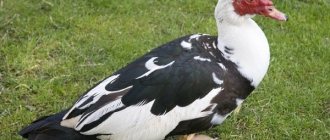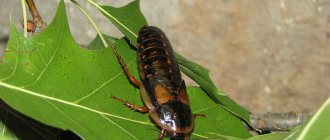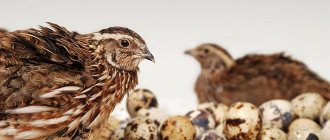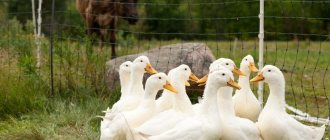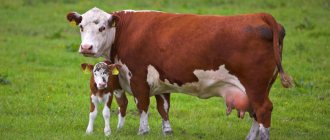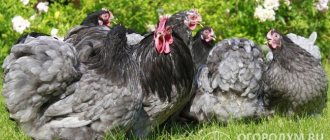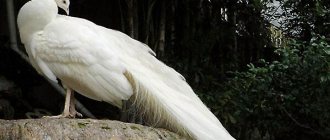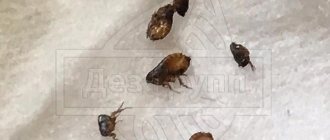If the competition were held, the most beautiful bird in the world, the peacock, would, without any doubt, take first place. The wealth of colors that the peacock wants to show off at every opportunity is a delight to the eye.
The first time you meet a peacock, you will get an unforgettable experience that will last a lifetime. Grace in every step, and a variety of colors that strive to outshine everyone around.
With all the unusually noble external characteristics, who would have thought that the peacock belongs to close relatives of the chicken family. Compare an ordinary chicken and a peacock. This fact of kinship does not fit into the head, but it is true.
What's the beauty?
The peacock's tail is distinguished by its extraordinary beauty.
When the bird spreads it like a fan, a magical pattern becomes visible that literally mesmerizes. There are certainly bright, juicy “eyes” at its ends.
In addition, the bird has an ornament on its head. This is a beautiful crest with funny bells.
Navigation
Personal tools
- You did not introduce yourself to the system
- Discussion
- Contribution
- Create an account
- To come in
Namespaces
- Article
- Discussion
Options
Views
- Read
- Edit
- Edit code
- Story
More
Search
Navigation
- Home page
- Categories
- Index A - Z
- Featured Articles
- Random article
- Current events
Participation
- Report a bug
- Community
- Forum
- Fresh edits
- New pages
- Reference
- Donate
Tools
- Links here
- Service pages
- Permanent link
- Page details
- Wikidata element
- Quote page
Print/Export
- Create a book
- Download as PDF
- print version
In other projects
- Wikimedia Commons
- Wikispecies
In other languages
- العربية
- Azərbaycanca
- বাংলা
- Brezhoneg
- Catala
- Cebuano
- Cymraeg
- Dansk
- Deutsch
- English
- Esperanto
- Español
- Eesti
- Euskara
- فارسی
- Suomi
- Français
- עברית
- Magyar
- Հայերեն
- Bahasa Indonesia
- Italiano
- 日本語
- ភាសាខ្មែរ
- Latviešu
- മലയാളം
- Bahasa Melayu
- မြန်မာဘာသာ
- Netherlands
- Norsk
- Occitan
- Polski
- پنجابی
- Português
- Scots
- Simple English
- Slovenčina
- Slovenia
- Basa Sunda
- Svenska
- ไทย
- Ukrainian
- Tiếng Việt
- Winaray
- 中文
- Bân-lâm-gú
Where are birds most often found?
The most common habitats are countries such as: Pakistan, India, Bangladesh, Nepal, Sri Lanka. They are comfortable in areas located at least 2 km above sea level.
Jungles, forests, bushes, river banks are the places where this amazingly beautiful bird lives best.
The main thing is that there are no dense thickets. But they don’t know how to live in open areas.
References
- ^ a b
BirdLife International (2016).
" Afropavo congensis
".
IUCN Red List of Threatened Species
.
IUCN. 2016
: e.T22679430A92814166. Doi:10.2305/IUCN.UK.2016-3.RLTS.T22679430A92814166.en. - Dowsett, R.J.; Forbes-Watson, A. D. 1993. A checklist of birds of the Afrotropical and Malagasy regions. Tauraco Press, Lee
- ^ a b c
Mulotwa, M.;
Louette, M.; Dudu, A.; Upoki, A.; Fuller, R. A. (2010). "Congo peacocks use both primary and old regenerating forest in Salonga National Park, Democratic Republic of the Congo." Ostrich
.
81
: 1–6. Doi:10.2989/00306525.2010.455811. - "Congo Peacock." World Association of Zoos and Aquariums. Archived from the original on July 6, 2015. Retrieved March 4, 2014.
- BirdLife International (2014) Species fact sheet: Afropavo congensis. Uploaded from BirdLife | Partnership for nature and people." Archived from the original on 2007-07-10. Retrieved 2013-08-07.
- Mulotwa, M., Louette, M., Dudu, A., & Upoki, A. (2006). Congolese peacock Afropavo congensis in Salonga National Park (Democratic Republic of Congo). Malimbus
,
28
, 52-53. - ^ a b
Hart, J. & Upoki, A. (1997).
"Distribution and conservation status of the Congo peacock Afropavo congensis in eastern Zaire". Bird Conservation International
.
7
(4): 295–316. Doi:10.1017/s0959270900001647.CS1 maint: uses the authors parameter (link to site) - Collar, NJ.; Butchart, S. H. M. (2013). "Conservation of bird breeding and diversity: chances and challenges." International Yearbook of Zoos
.
8
(1): 7–28.
Some interesting facts
- The national symbol of Burma is the peacock.
- In the Middle Ages, birds' feathers were used to decorate hats, dresses, and knight's helmets.
- The bird does not get along well with other birds, but it is unpretentious to food and can easily tolerate cold.
- In India, peacock hunting is prohibited at the state level. Birds are sacred here. Hindus are sure that their screams warn of an impending thunderstorm, the approach of snakes and tigers.
- In the Southern Hemisphere there is the constellation "Peacock".
Less popular varieties
In addition to the described species of representatives of the pheasant family, other representatives of this colorful family can be found in the wild.
Black-shouldered
One of the varieties of Indian peacock with darker wings - the females have lighter wings than the males. Yellow or brown streaks can be seen on the neck and back. The uniqueness of the subspecies lies in the color of the feathers - they can be painted in 10 different shades. The most common colors are white, peach, green, purple or bronze.
In the wild, black-shouldered peacocks can be found with bright stripes on their wings.
Fact! On the eve of a thunderstorm or other bad weather, birds begin to scream piercingly.
Red
Peacocks do not live in the wild with this coloration. They were bred by breeders in the last century, and became frequent residents of zoos and shrouds. The feathers are red-green with a blue tint, and the tail is shorter than those of ordinary peacocks. Spurs are noticeable on the paws.
After mating, the female lays 2-4 eggs and incubates them for 4 weeks. At this time, the male protects his lady and future offspring.
Frightening and attractive beauty
In fact, the “eyes” at the ends of the feathers serve as a tool that is quite good at repelling predators. How? It's simple. When a bird spreads its tail, a large number of eyes “look” at the attacker. This is what confuses the predator.
At the same time, the fanned tail is used to attract the attention of the peahens. The marriage ritual looks fascinating from the outside.
Ordinary
The most common type of peacock is called Indian, because of the halo of their habitat. In addition to India, birds can live in Pakistan, Nepal and Bangladesh, and Sri Lanka.
Peculiarities:
- blue-green tint of feathers on the back;
- the upper part of the body is a bright blue shade, iridescent green in bright sunlight;
- the fan smells black;
- the tail is brown, and the feathers above it are green; in the sun they acquire a bronze tint;
- the beak is pink with a dark, grayish tint.
Fact! Common peacocks have a very unpleasant, overly loud cry.
The length of the body, as well as the feathers on the tail, reaches almost 2 m. With proper care, birds of this species grow in carcasses up to 5 kg.
Females look noticeably smaller, although it is easier to distinguish them in pairs by the color of their plumage - it is less bright, not so expressive. Female peacocks have a small body length - 1 m. The lateral areas of the head and neck are painted white, while the tone of the chest and entire back is brown with a greenish tint.
It is the Indian, or common peacock, that has many varieties. The most famous of them:
- purple;
- midnight;
- opal;
- cameo;
- motley;
- white peephole;
- peach;
- varnished;
- lavender and others.
The common peacock is the easiest to find in the wild. They never let people get close to them, and in case of danger they prefer to fly away rather than spread their tail, as many are accustomed to thinking.
Kinds
The peacock bird has two Asian species - common (Pavo cristatus) and green (Pavo muticus Linnaeus).
The second one is different in size. It is much larger than the Indian one. There is also an African species that for some reason stands apart.
Basic information
Despite the genetic component (the order Galliformes), it was once the peacock that became the prototype of the fabulous firebird for its unique appearance. Although they spend most of their time on the ground, they can fly beautifully. They feed on food of plant and animal origin, adore snakes and mollusks.
A large, fluffy tail is the prerogative of males. It appears before the start of the mating season, and after successful mating, the regrown feathers immediately fall off. Such a colorful instrument is necessary for peacocks to attract the opposite sex, as protection, and as a prerogative among competitors.
Most birds are polygamous: a family consists of one male and several females. The exception is African birds. They create strong monogamous unions once in a lifetime. There are only a few species of peacocks found in the wild:
- Indian or ordinary;
- white or albino;
- African or Congolese;
- Javanese or green.
Each of them lives in a specific halo and has a number of subspecies, differing in feather colors and anatomical features of the body. Unfortunately, most of the current varieties of peacocks are artificial, bred by breeders, and found only in private zoos.
Fact! Despite the fact that the peacock is a tropical inhabitant, it tolerates extreme cold well and quickly gets used to human society.
Photos of peacocks
Links
- [zooeco.com/sist/s04543.htm Systematics] of Asian peacocks in the Popular Encyclopedia about Animals by I. L. Evstafiev [zooeco.com/index.html “Animal World”]
- [bvi.rusf.ru/sista/s04543.htm Systematics of Asian peacocks] in [bvi.rusf.ru/sista.htm BVI Archive: Systematics]
- [www.gbwf.org/pheasants/green_peafowl.html Green Peafowl] at [www.gbwf.org/gbwf.org, “Pheasants & Peafowl - Aviculture and Conservation”] (English)
- Subspecies of the Javan peacock in the database in [database.amyspeacockparadise.com/ "Peafowl Varieties Database"] on the website [amyspeacockparadise.com/ "Amy's Peacock Paradise"], owner - Amy Miller (USA) (English)
- [www.leggspeafowl.com/photo/javagreen.htm Photos of Javan green peacock] on the peacock farm website [www.leggspeafowl.com/Legg's Peafowl Farm], owner - Brad Legg (USA) (English)
- [www.peafowl-farm.com/english/my_peafowls.htm Green peacock] on the website of the peacock farm [www.peafowl-farm.com Peafowl-Farm], owners - Reinhold und Beate Bauer, Albbruck Buch () (German. ) (English)
- [www.peafowl.org/varieties.htm Species, subspecies and varieties of peacocks] on the website [www.peafowl.org/ United Peafowl Association, USA) (English)
- [www.arkive.org/species/GES/birds/Pavo_muticus/ Photos and videos] of the Javan green peacock on the website [www.arkive.org/ "ARKive - Images of Life on Earth"] (English)
- [www.birdlife.org/datazone/speciesfactsheet.php?id=286 Green Peacock] on the website [www.birdlife.org/index.html BirdLife International] (English)
- [www.rdb.or.id/index.html Green Peacock] in [www.rdb.or.id/view_html.php?id=223&op=pavomuti “Red Data Book: Threatened Birds of Asia”], BirdLife International .)
- [www.iucnredlist.org/search/details.php/16429/all Green Peacock] in [www.iucnredlist.org/ “The IUCN Red List of Threatened Species”] (English)
Saving [edit]
The Congo peacock is listed as vulnerable on the IUCN Red List. As of 2013, the wild population ranged from 2,500 to 9,000 adults. [1] Given that secondary forests are used for reforestation in Salonga National Park, they may be an important habitat to include in conservation strategies. [3]
Captive breeding programs have been started at the Belgian Antwerp Zoo and the Salonga National Park. [8]
Notes
- Boehme R. L., Flint V. E.
Five-language dictionary of animal names. Birds. Latin, Russian, English, German, French / Under the general editorship of academician. V. E. Sokolova. - M.: Rus. lang., "RUSSO", 1994. - P. 56. - 2030 copies. — ISBN 5-200-00643-0. - See [www.zoonomen.net/bio/bioc.html#Chapin for a brief biographical note] in the database [www.zoonomen.net/ "Zoonomen - Zoological Nomenclature Resource"]. (English)
- ↑ 1 2
Kimball
et al.
(1997). - Akimushkin (1964).
- Akimushkin (1971); Rakhmanov, Bessarabov (1991).
- de Boer, van Bocxtaele (1981).
Phylogenetic origin
Originally monotypic genus Afropavo
considered related to the Asian peacock genus
Pavo
.
However, Afropavo
will show significant differences from
Pavo
in morphology (relatively weak sexual dimorphism, lack of a distinctive plume or specialized ocelli-containing feathers in the male) and reproductive behavior.
Distribution of Afropavo
at a considerable distance from
Pavo
and other pheasants living in Southeast Asia, also represents a biogeographical mystery[3].
Sequencing of sections of mitochondrial DNA Afropavo
and their comparison with similar sequences from
Pavo
and other Galliformes convincingly showed the close relationship of the African and Asian peafowl and the estimated time of divergence of the two genera in the late Miocene [3].
Habitat
The peacock belongs to the pheasant family and belongs to the order Galliformes. That's why it is also called the big chicken. And yet, where do peacocks live? It is known that the main habitat of peacocks is India and Sri Lanka. It was here that the common peacock, or, as it is also called, the Indian peacock, was first discovered. This species is the most common today - it can be observed in almost all zoos in the world.
Another species of peacock lives on the island of Java, the Malay Peninsula and Indochina. This species is called gigantic or Javanese. It is much larger than usual and has a brighter color. It must be said that there are about 50 species of peacocks. They are all different in size, but the males have a magnificent tail, which classifies them as this species.
Distribution history
This amazing bird was first seen by the Dutch who reached the islands in the Pacific Ocean. When they arrived back, they told an amazing story about a bird of paradise with a magnificent tail. Naturally, these stories raised a lot of questions. Where do peacocks live? In which country can they be seen? The discoverers of India were followed by traders who brought unusual birds. Interestingly, the first mention of these creatures is found in ancient scrolls, including the Bible. These birds decorated the magnificent palaces of the powerful rulers of Ancient Egypt, Rome and India, and were also the pride of the richest and wisest king in the history of mankind - Solomon. Peacocks came to Europe during the time of Alexander the Great, famous for his aggressive campaigns in the countries where peacocks live.


